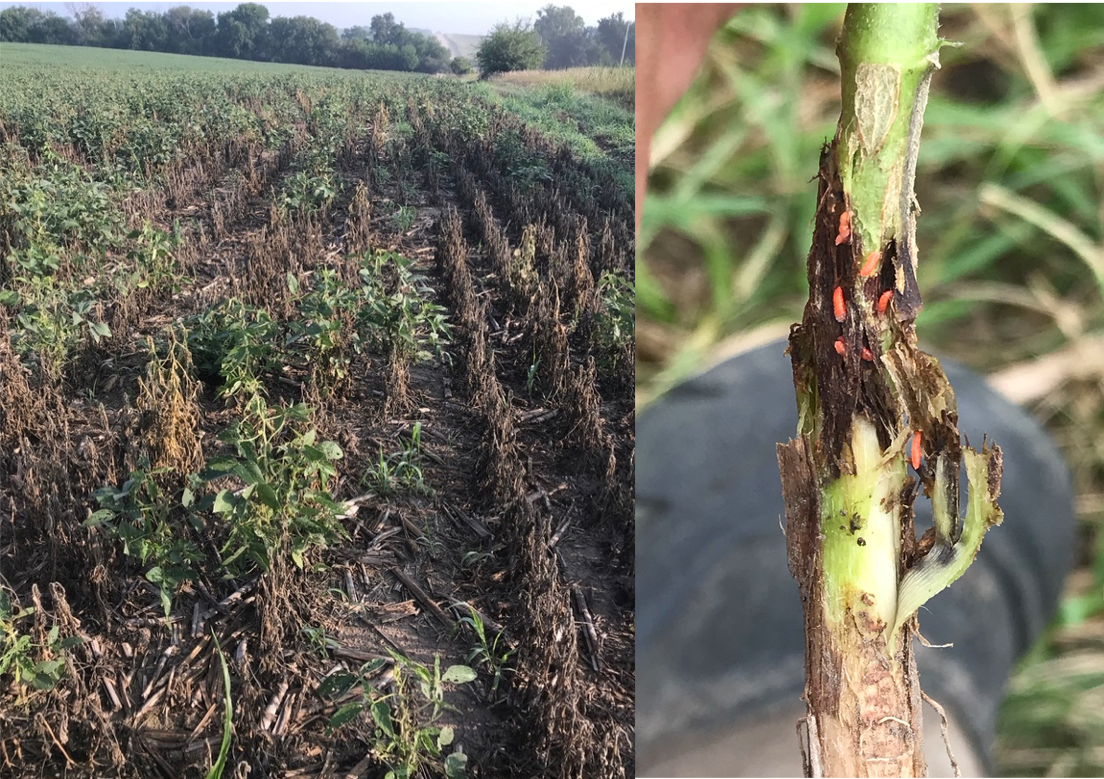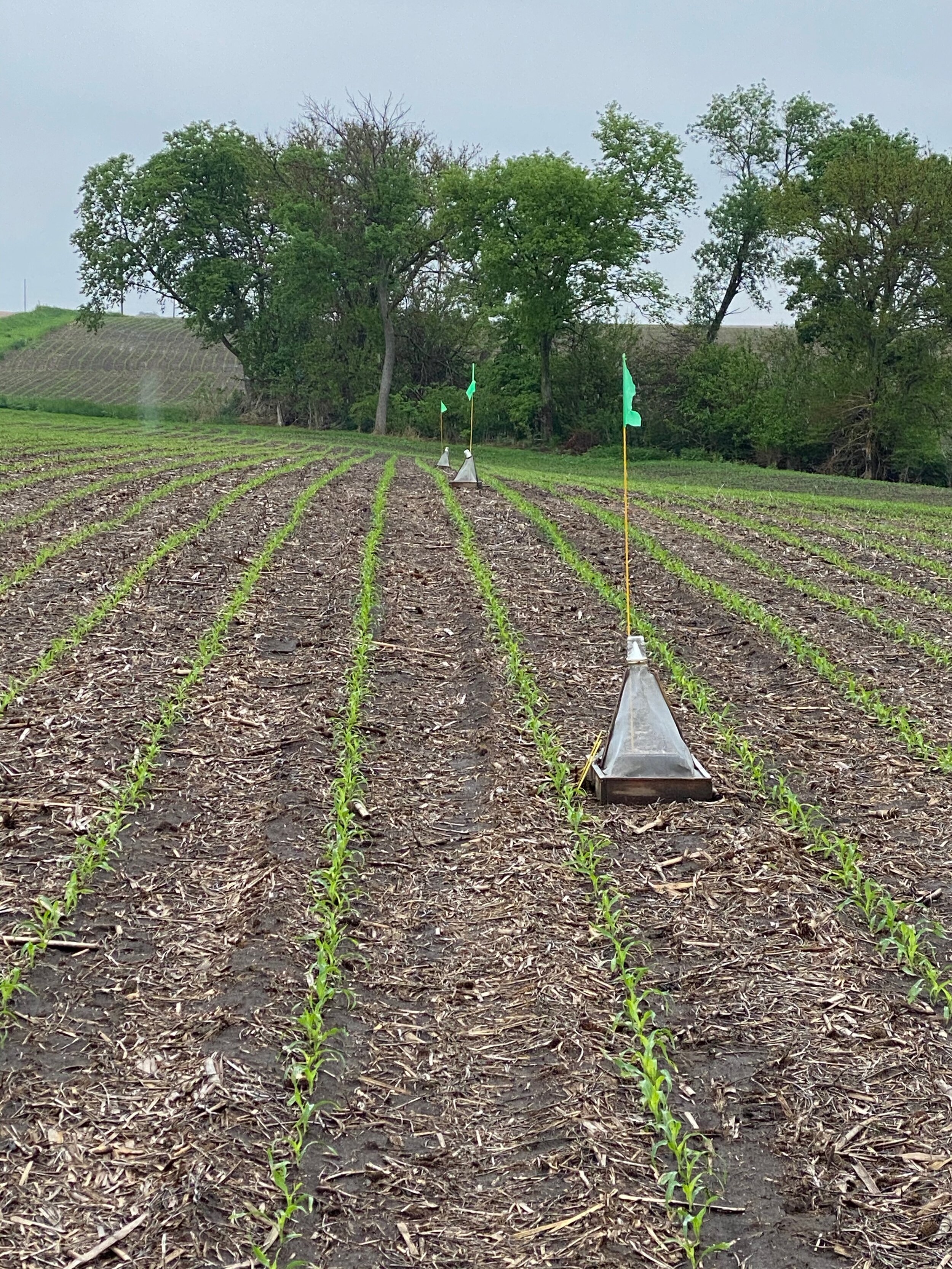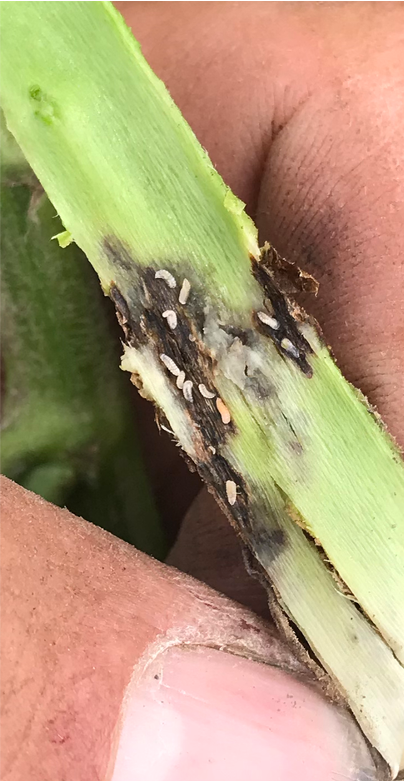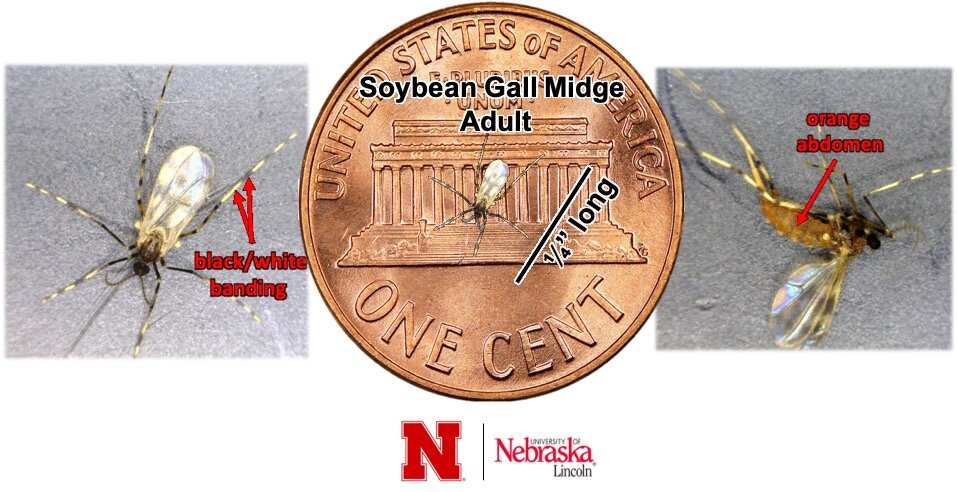Five New Counties in Iowa | Three in Minnesota | Wilting and Dead Plants in Nebraska
Plant injury reported in two new counties in Iowa and three other counties were documented with orange larvae.
Three county in southeastern Minnesota were found with larvae.
Growers in those areas should scout fields.
Significant increase in adult emergence and plant injury in eastern Nebraska.
October 2nd , 2025
Highlights
Soybean gall midge larvae were found in three counties in southeastern Minnesota.
Adults are continuing to emerge from soybean fields in Nebraska
Larvae were observed in petioles in the upper canopy of soybean at some sites in Nebraska.
Iowa
Soybean gall midge infested and dead plants were found in Tama and Poweshiek in July. On August 12th, larvae were found in Union and Clarke Counties for the first time. On August 20th, a soybean field with soybean gall midge larvae was found in Grundy County.
Minnesota
Soybean gall midge larvae were found infesting soybean plants in a field in Dakota, Chisago, and Ramsey Counties in southeast Minnesota between July 15 and 28. In Dakota County. The infested plants were mainly located on an edge of the field adjacent to a corn field that was planted to soybean last year. The level of infestation on that edge of the field was relatively low, with only 3.2% of soybean plants infested with soybean gall midge larvae. The infested plants showed the typical darkened lesions at the base of the stems near the soil surface, but none of the plants were wilting or dying. The Chisago and Ramsey County detections were on sweet clover.
Figure 1. Map of current distribution of soybean gall midge based on larval detections and year it was first found. Updated August 13th, 2025.
Nebraska
Adult emergence from the current year’s soybean was observed at all locations this year. Larval counts between plants vary considerably, but we saw several plants with numbers exceeding 30 per plant. We are also seeing some gall midge in the petioles (see image below) in the upper portion of soybean plants at some sites. Plant death along field edges at research sites has exceeded 50% for a few plots; most are 10-25% dead.



Figure 2. Larvae in soybean petiole, soybean field with soybean gall midge injury, and stem infested with soybean gall midge.
South Dakota
Larvae were observed in fields in the southeast. No signs of wilting or dead plants.
Management Recommendations
Past studies have shown that peak larval numbers for the season typically occur in late July and early August. These large numbers of larvae often raise questions about management at this point in the season. Managing soybean gall midge this late in the season isn’t recommended for several reasons. First, adult emergence cages in the current year’s soybean field in east-central Nebraska have shown that adults are emerging almost daily from now until late-August. Second, the larvae are hidden within the stem, and as a result, foliar insecticide applications are unlikely to reach them. Lastly, a field study conducted at the Eastern Nebraska Research and Extension Center over the last couple of years showed that soybean gall midge was unable to cause a significant impact on soybean yields when infestations on plants at the R2 (full flower) that were not previously infested.
Although management isn’t recommended, the next few weeks are a good time to scout soybean fields for the presence of larvae. Soybean fields do not have to show signs of wilting or dead plants to have a significant infestation of soybean gall midge. To scout a field, you should look at the base of a soybean plant between the first two rows that are adjacent to a field that was soybean the previous year. There are several videos on the “Scouting for Soybean Gall Midge” webpage.
Thank you to the USDA NIFA, North Central Soybean Research Program, Nebraska Soybean Board, Minnesota Rapid Response Agricultural Fund, Minnesota Soybean Research and Promotion Council, and our Industry Partners for funding soybean gall midge research.


Wilting and dead plants from soybean gall midge feeding in Lancaster County, NE. Photo taken on July 19th, 2024. Credit: Justin McMechan
Grower Survey of Soybean Gall Midge and Dectes Stem Borer
Dr. Doug Golick from the University of Nebraska is conducting a survey on the opinion of soybean producers on emerging pests. As a subscriber of the soybean gall midge alert network website, I would like to inform you that a link to this survey is available for you to provide your opinions on emerging soybean pests in Nebraska. Participation in this survey will take about 15 minutes to complete. If you are interested in participating in this study, follow the link to the survey here:
https://go.unl.edu/soybeanpestsurvey2024
There are no known risks involved in this research. If you have any questions regarding this research, please let me know. You can reach Doug at dgolick2@unl.edu. For questions concerning your rights or concerns about the research, please contact the UNL Institutional Review Board (IRB) at 402-472-6965 or irb@unl.edu.
White larvae found on soybean plants near Mead, NE on June 14th, 2023.
Photo taken by Justin McMechan.
Unmanned aerial vehicle photo of soybean gall midge injured field in Cass County, NE taken on August 26th, 2020.
Photo courtesy of Nick Tinsley (Bayer Crop Science)
White and orange larvae found on soybean near Mead, NE on June 19th, 2023










